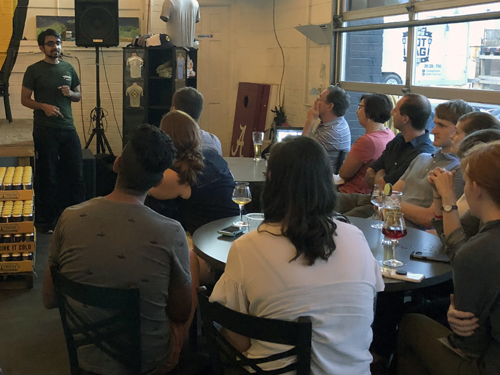If you are one of the many people that wear glasses or contacts, you know what it feels like to experience the world as a blurry place. You’ve squinted your eyes, trying to read a word that looks like a squiggle. You’ve seen colors and lines bleed into a hazy fog. As you watched your eyeglasses prescription strengthen year after year, you may have wondered, could there have been a way to prevent this?
 Researchers at UAB are actively working to offer a solution. Keyur Savla, a second-year PhD student in the UAB Vision Science Graduate Program, describes his own research journey into understanding a particular type of vision problem: myopia.
Researchers at UAB are actively working to offer a solution. Keyur Savla, a second-year PhD student in the UAB Vision Science Graduate Program, describes his own research journey into understanding a particular type of vision problem: myopia.
Understanding Myopia
Myopia, commonly referred to as near-sightedness, is a type of visual disorder that results in poor distance vision. In the normal eye, rays of light enter through the cornea and focus on a point in the retina, known as the fovea. When light is focused correctly on this point, our vision is clear and in focus. However, in the myopic eye, the light focuses at a point just before the fovea. As a result, we see images as blurry. The light focuses incorrectly because the eye grows too long in myopia. “This is what causes the focus to form ahead, instead of at the fovea,” said Keyur.
Myopia as an International Health Concern
According to Keyur, finding a cure for myopia has not been at the “forefront of science” over the past years, given the availability of glasses, contact lenses, and corrective eye surgeries. However, recent studies show that myopia is rising at alarming rates: In 2010, worldwide prevalence of myopia was estimated to be approximately 2 billion. By 2050, it is predicted that 4.8 billion individuals will have myopia, which is one-half of the world’s population! Individuals with myopia are at greater risk of vision-threatening diseases, such as cataracts, glaucoma, and retinal detachment. As a result, the World Health Organization (WHO) recently announced that myopia control techniques must be developed with urgency.
New Technologies for Myopia Control
Keyur’s research focuses on new technologies to slow the progression of myopia. Currently, corrective lenses are prescribed by measuring the refractive error at a single point: the fovea. “This foveal focus accounts for about 90% of the vision, but it is not the only thing that is causing the eye to grow”, describes Keyur. In fact, points across the entire retina contribute to vision. “The whole eye actually decides what the refractive error of the eye is. Even though we correct one point, these remaining points are still out of focus. And since they are out of focus, it causes the eye to grow, or the eye to think – okay, we are out of focus, we need to grow to form focus”, describes Keyur. Innovative technology makes it possible to take thousands of measurements to capture the refractive error of the entire eye, instead of only at the fovea. In one of Keyur’s previous projects, he measured the refractive error of approximately 4000 points per eye.
As a result of this research, custom-made contact lenses are being used by the UAB Myopia Control Clinic to correct for the refractive error of the entire eye. Research shows that using this type of customized lens during childhood can reduce an individual’s myopia by up to 50 percent! Thus, it may be possible to imagine a future in which our children can see clearly, with less need for contacts or glasses.